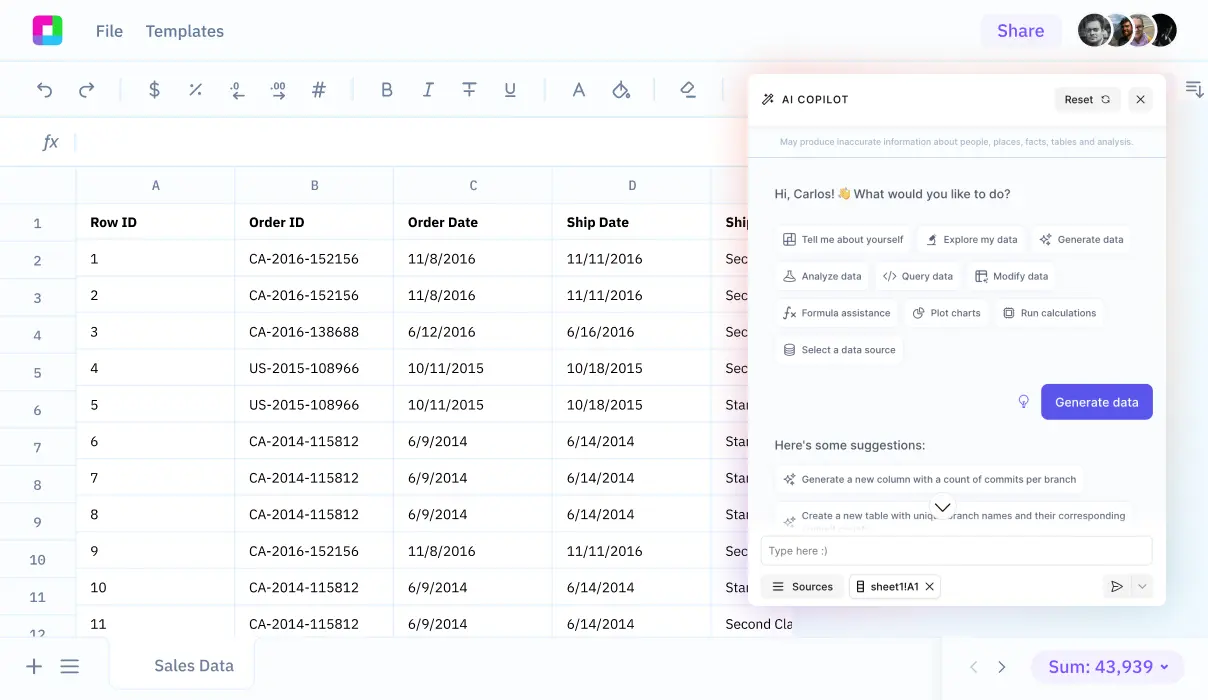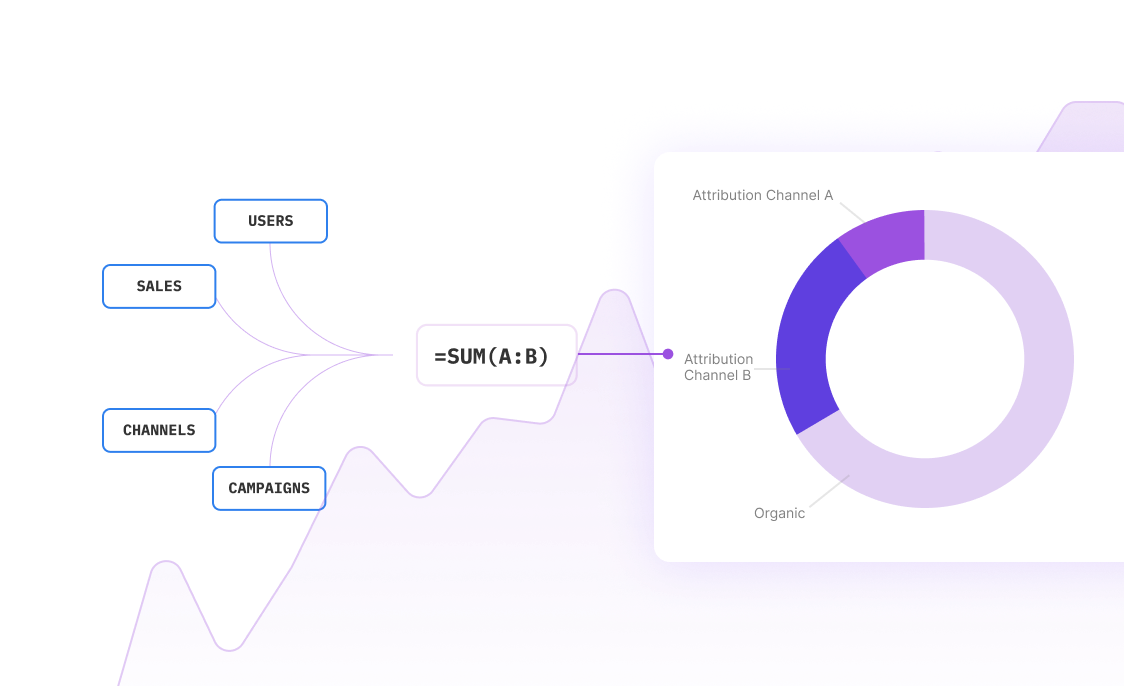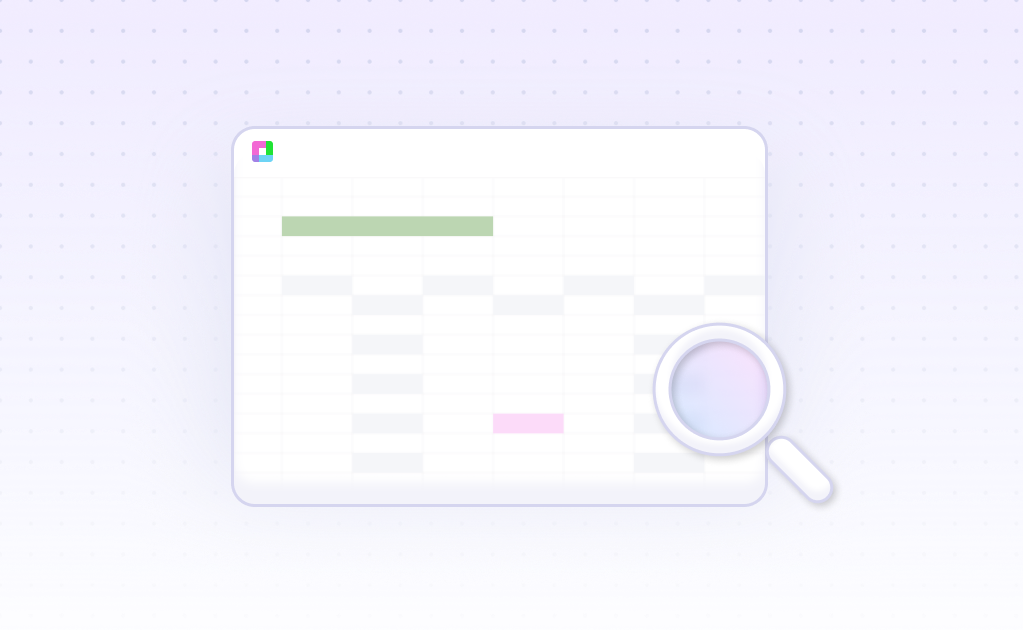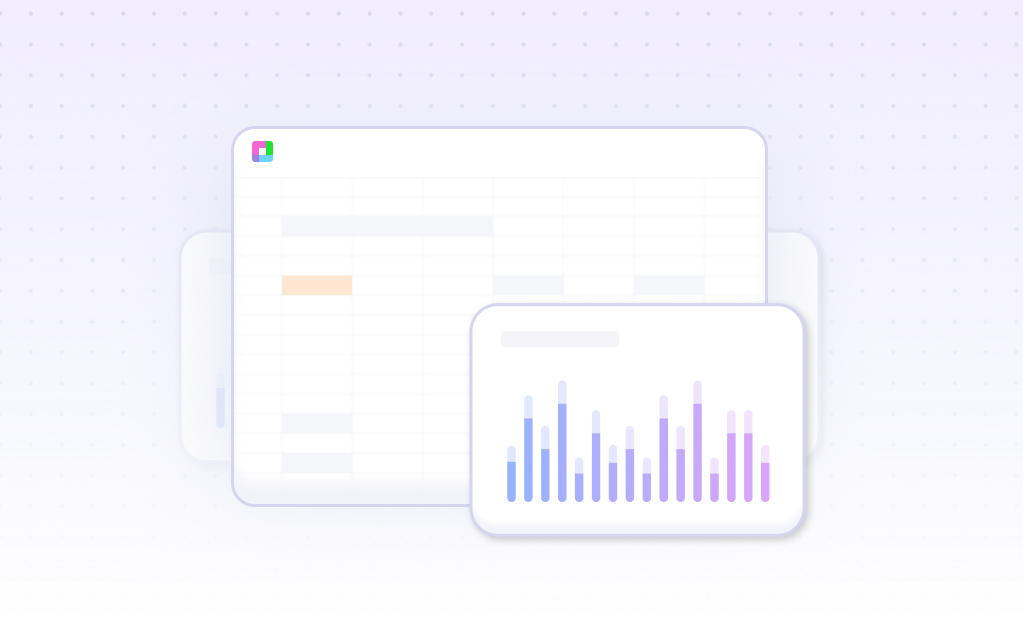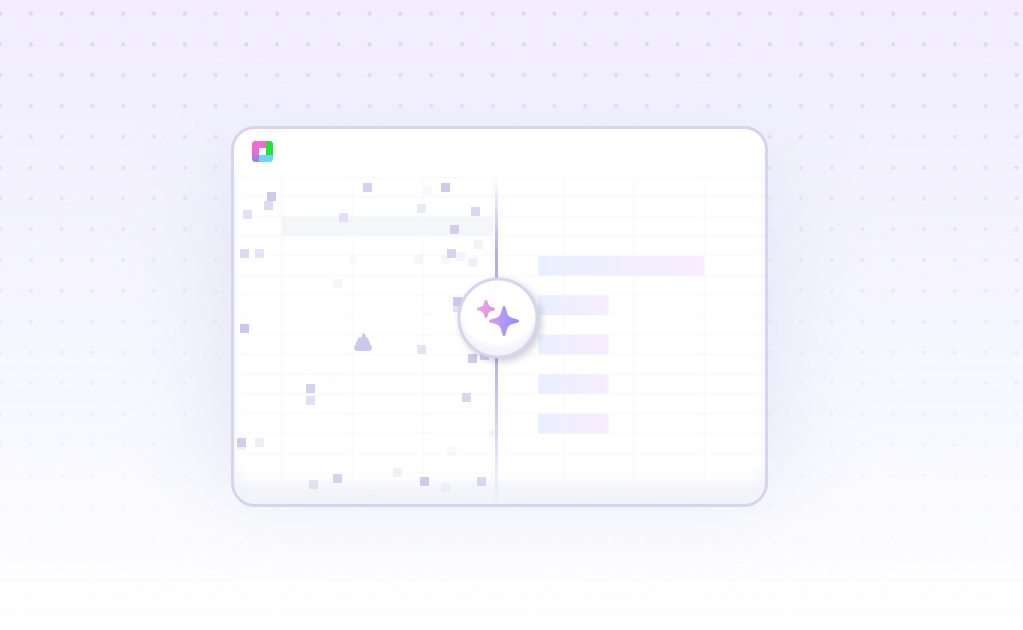
Introduction
Quantitative risk analysis provides a structured approach to evaluating risks through numerical values and statistical methods. While Excel with the XLRisk plugin enables Monte Carlo simulations and statistical analysis for cybersecurity decision-making, modern AI alternatives offer enhanced capabilities. Sourcetable automates complex spreadsheet tasks with AI-driven formulas, providing advanced data analysis through SQL and Python integration. The platform generates automatic formulas like SUM and VLOOKUP, creates interactive charts, and streamlines data cleaning processes. Learn how Sourcetable's AI-powered features revolutionize quantitative risk analysis at sourcetable.com/signup.
Why Sourcetable Is Superior for Quantitative Risk Analysis
Traditional Excel-based risk analysis relies on manual table structuring and pivot tables, making it time-consuming and prone to bias. Sourcetable transforms this process by combining Excel's familiar functionality with AI-powered analytics.
Enhanced Efficiency and Accuracy
Sourcetable's AI capabilities deliver faster, less biased risk analysis while maintaining the structured data approach of spreadsheets. Its natural language processing enables quick identification of hidden threats and precise risk assessment, surpassing Excel's basic analytical tools.
Comprehensive Risk Management
Unlike Excel's limited summary tables, Sourcetable provides integrated tools for cost-benefit analysis, resource allocation, and regulatory compliance. Its AI-driven insights enable continuous improvement of cybersecurity posture and better evaluation of third-party risks.
Data-Driven Decision Support
Sourcetable's visualization capabilities and automated reporting features strengthen risk communication and collaboration across organizations. This comprehensive approach helps justify cybersecurity investments through clear, quantifiable data analysis.
Benefits of Quantitative Risk Analysis with Sourcetable
Quantitative risk analysis delivers accurate projections and objective assessments of potential risks. This data-driven approach provides detailed information that improves client confidence and decision-making capabilities.
Why Choose Sourcetable for Risk Analysis
Sourcetable offers systematic risk assessment capabilities that enable organizations to understand and proactively address potential challenges. With built-in audit trails and multi-user collaboration features, teams can navigate uncertainties confidently while adapting to evolving circumstances.
Sourcetable vs Excel for Risk Analysis
While Excel offers basic spreadsheet functionality, Sourcetable provides enhanced features specifically designed for risk analysis. These include 24/7 live support, live online training, and advanced features like calculators, charting, and audit trails. The platform's collaborative capabilities enable teams to work together effectively on risk assessment projects.
Quantitative Risk Analysis Examples with Sourcetable
Sourcetable leverages AI-powered features to perform comprehensive quantitative risk analysis across multiple methodologies. The platform uses mathematical models, probabilistic techniques, and statistical analysis to quantify risks based on impact and likelihood.
Risk Matrix Analysis
Sourcetable's automated data collection and analysis capabilities enable efficient risk matrix creation. The platform generates instant visualizations of risk trends and improves risk visibility across unauthorized access, data breaches, and other security threats.
Cross-Departmental Risk Assessment
AI-powered analysis examines data across departments to create realistic risk scenarios. The system automatically identifies custom risk factors through survey responses and augments risk surveys with workflow automation.
Predictive Risk Analysis
Machine learning capabilities perform predictive risk assessments and identify emerging threats. This analysis helps organizations manage cyber risks, ensure compliance, and assess exposure to employees, environment, assets, and reputation.
Resource Allocation Analysis
Quantitative analysis through Sourcetable enables efficient resource allocation and targeted mitigation strategies. The platform helps prioritize risks to prevent spreading resources too thin while facilitating proactive client engagement.
Sourcetable Quantitative Risk Analysis Use Cases
Real-Time Third-Party Risk Monitoring |
Connect multiple data sources including Stripe, Zendesk, and internal databases to analyze vendor risks in real-time. Use SQL queries and AI pattern detection to identify risk trends across vendor networks. Generate automated risk scores based on predefined criteria and historical incident patterns. |
Compliance Data Aggregation |
Centralize compliance data from various monitoring systems to evaluate risk controls. Transform and analyze data across different spaces using vector queries. Use AI-powered analysis to detect anomalies and verify actual values against predictions for compliance reporting. |
Predictive Risk Scenario Analysis |
Process billion-row datasets to construct forward-looking risk scenarios. Leverage AI pattern recognition to identify risk predictors from historical data. Generate real-time SQL queries to evaluate potential outcomes across multiple dimensions using |
Cross-Channel Risk Assessment |
Sync data from 100+ business applications to create comprehensive risk profiles. Use metadata-enhanced LLM analysis to evaluate unstructured data across channels. Automate reporting to track risk metrics and control effectiveness across the organization. |
Frequently Asked Questions
What is quantitative risk analysis and why is it important?
Quantitative risk analysis is a methodology that assesses risks using numerical values to make objective assessments. It is critical for managing risks like toxic metals in urban environments and is particularly valuable for complex decisions that require trading off benefits and risks. The process involves identifying risks, assigning values to them, and calculating a total risk exposure score to determine whether to proceed with a project.
What specific benefits does quantitative risk analysis provide?
Quantitative risk analysis provides several key benefits including improved team decision-making, increased efficiency in the decision-making process, enhanced internal communication, and greater transparency in assessing benefits and risks. It offers a structured framework that is particularly valuable for complex decisions and has growing support through case studies and regulatory guidance.
How can quantitative risk analysis be performed in practice?
Quantitative risk analysis can be performed by developing mathematical relationships and methodologies to predict risks based on specific characteristics, using principal component analysis models, comparing observed concentrations of elements, and analyzing the interactions between various factors. In environmental studies, for example, it can analyze heavy metal behavior in aquatic environments by studying the effects of nutrients, water properties, and sediment properties.
Conclusion
Traditional quantitative risk analysis in Excel requires specialized plugins like XLRisk for statistical distributions and Monte Carlo simulations. These tools enable precise risk calculations but demand extensive Excel expertise and manual configuration.
Sourcetable offers an AI-powered alternative that automates complex spreadsheet tasks. Its AI generates formulas like SUM and VLOOKUP, creates interactive charts, and provides advanced data analysis through SQL and Python integration. The platform's automated data cleaning and voice-driven interactions streamline the quantitative risk assessment process.
Experience AI-enhanced quantitative risk analysis today at sourcetable.com/signup.
Recommended Analysis Guides
Connect your most-used data sources and tools to Sourcetable for seamless analysis.
Frequently Asked Questions
If you question is not covered here, you can contact our team.
Contact Us
